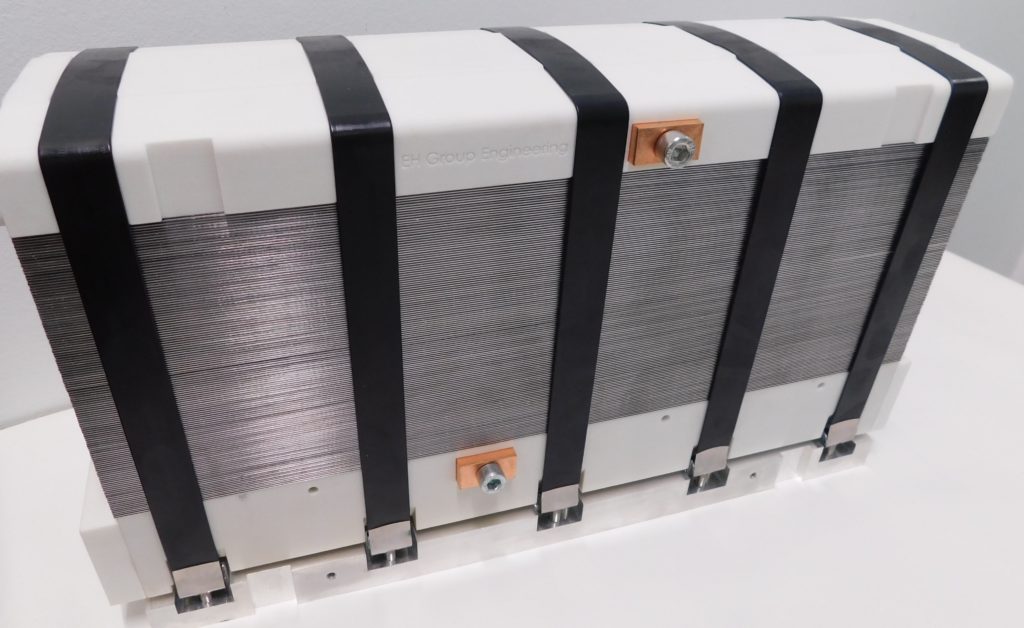Redesigning fuel cell technology. Source: EH Group
Share
Why Fuel Cells are no longer the Wallflowers
As the electrification of transportation continues to accelerate with battery solutions leading the way, are the right technological and strategic decisions being made? It is now increasingly recognized that fuel-cell (FC) systems are best applied to commercial vehicles where range, payload and extensive usage are key. They offer range and refueling times that compete or often exceed that of fossil fuel vehicles. With the rapid industrialization of the key building blocks of the hydrogen ecosystem, are we fast approaching a tipping point where hybrid solutions combining FCs with battery technology become the true norm, and with far wider coverage of transport applications?
Tackling Cost & Complexity
Aside from hydrogen infrastructure, cost remains arguably the most significant obstacle to the more widespread adoption of FC technology in mobility. To meet this challenge, the industry is ramping up its production capacity with significant investments by the likes of major automotive suppliers (such as Bosch), existing players (such as Ballard, Toyota and Hyundai), and nimble start-ups (such as EH Group Engineering of Switzerland). The objective is simple: prepare to scale-up production and reduce cost. We believe that a fully integrated assembly process is the best path to radically reduce costs. In parallel, fuel-cell systems remain complex, with often expensive balance of plant components. Pathways to simplifying these are also being rapidly developed, leading to higher efficiencies and lower costs.

DSCN0615
EH-81 Fuel Cell Stack. Source: EH Group
Low Hanging Fruit
While for many years much of the attention on fuel-cell mobility was focused on cars as an alternative to battery solutions, the real battle was being waged elsewhere – on the floors of large e-commerce fulfillment centers. The forklift model, perfected by the likes of Plug Power, has demonstrated that where intensive commercial vehicle use is required, with low downtimes, fuel cells are already economically competitive. We are witnessing a similar development in the heavy goods vehicle market where the right combination of CO2 incentives and forward-thinking logistics companies have created the right environment for FC trucks to enter the market. This mirrors developments in the municipal bus market across much of Europe where FC buses continue to gain traction and are set to match diesel buses on a total cost of ownership (TCO) basis within a few years. Finally, we believe the opportunity for fuel-cell systems to replace diesel trains remains under-appreciated for new locomotives and retrofits. With nearly half of train lines in Europe unelectrified, the prohibitive cost of adding cantilevered lines at over 1 million EUR/km makes the TCO of FC locomotives a compelling story.
we are entering a new era that is characterized less by competition and more by the wisdom of complementarity, circularity, and hyper-efficiency
Next Challenges
The next significant areas where FCs with high-power densities will yield a significant advantage over battery technologies will play out in the maritime and aerospace sectors, both of which offer tremendous long-term opportunities, although with some near-term challenges to be overcome. To meet the growing potential in these applications, EH Group has developed a high-power density 250kW FC solution that sets new market standards. Across all mobility sectors, a new generation of skilled jobs is being created to accelerate these deployment opportunities.
The rapid scale-up of fuel-cell technology in parallel to the battery means that we are entering a new era that is characterized less by competition and more by the wisdom of complementarity, circularity, and hyper-efficiency. For decades now, the opportunity of the fuel cell must not be underestimated if we wish to come closer to the SDG and other climate targets set for 2030 and beyond. As the old adage goes: a mistake repeated more than once is a decision. The energy sector and investors have made the error before in thinking of the fuel cell as the unattractive wallflower; FCs still remain unequivocally the most sustainable, ecological and carbon-zero technological energy options of our age.

























